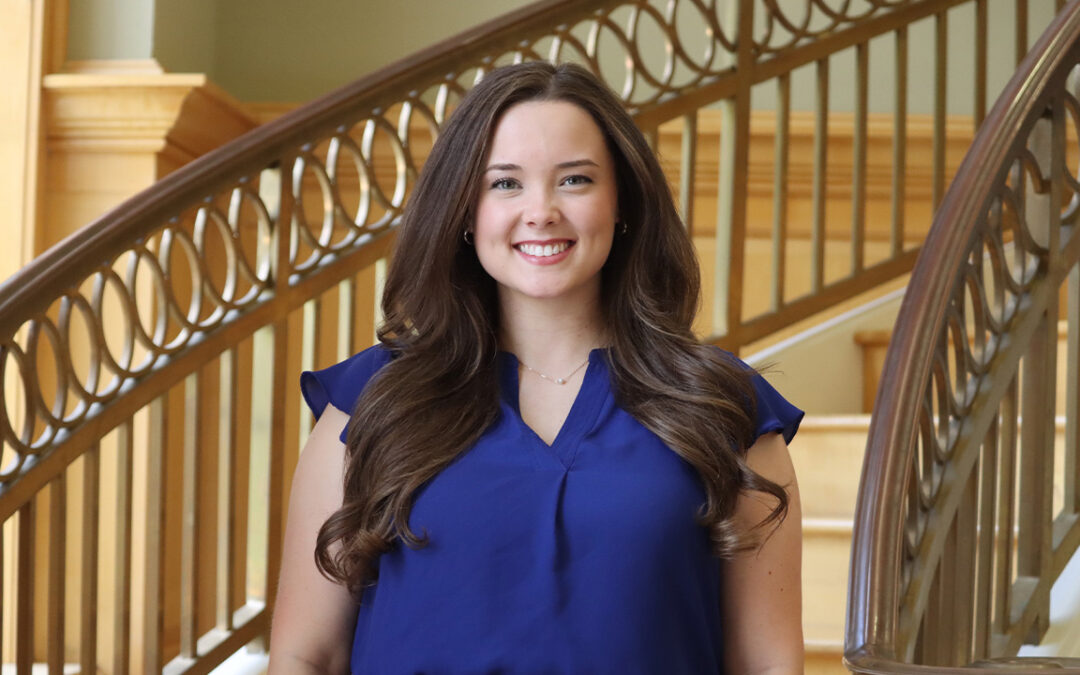By Paul Hollis
Have you ever bitten into your favorite fast-food chicken sandwich only to find the meat is tough and chewy? This could become a rarity, thanks to a process an Auburn University researcher is developing to rapidly detect poor meat quality in chicken breasts.
Amit Morey, assistant professor in the College of Agriculture’s Department of Poultry Science, is one of seven Auburn researchers recently awarded LAUNCH Innovation Grants, designed to help move their novel research from the lab to the marketplace and subsequently impact the state’s economy.
Auburn’s LAUNCH: The Fund for Research and Innovation program was created in 2015 with the support of the Office of the Vice President for Research and Economic Development. The goal is to create a $10 million endowment that will generate approximately $400,000 annually for research grants.
Morey said the grant he received will speed development of his research significantly and provide an immediate benefit to one of the state’s most vital industries.
“Alabama is the second largest poultry producer in the United States,” he said. “Consumers love poultry meat, so much so that we’re now consuming it at about 90 pounds per capita annually in the U.S., with the majority of it being breast meat.”
To satisfy such a robust demand, genetics and nutrition have been improved to grow meatier chickens more efficiently, Morey said, to the point of achieving approximately 41 billion pounds of ready-to-cook meat annually from chickens produced in this country.
Achieving that, however, has brought challenges, including woody or wooden breasts in chickens.
“This is simply a chicken breast that is very hard to the touch in raw form,” Morey said. “It’s also very chewy and leathery when it’s cooked, and that’s causing consumer concerns.”
The only current method for detecting woody breasts is to press the chicken fillets by hand to determine hardness and remove the meat from the food stream, he said. This isn’t practical in a commercial poultry setting, where 140 to 280 chicken breasts are being processed per minute.
“It’s impossible for someone to stand and do this manually, and doing it with consistent accuracy also is an impossible task,” Morey said. “There’s personal bias, fatigue and other factors involved. If it’s incorrectly labeled as woody breast, then money will be lost because woody breasts sell at a lower price.”
Consumer complaints arise when woody breasts go undetected.
Reducing complaints and economic losses
The key question, then, is how to reduce consumer complaints and the economic losses that are occurring in the poultry industry due to woody breast.
“The first step would be to have an accurate, reliable and repeatable, easy-to-use and cost-effective detection system,” he said. “Based on that, we started looking for different technologies, only to find that none existed. It intrigued me that this is a major quality issue, but there’s no technology available to address it. It’s the 21st century, and we’re pressing chicken fillets by hand.”
Morey used funding from a previous grant to complete a 7-Tesla MRI scan on chicken breasts, but that and other techniques are highly analytical and require extensive infrastructure. While they produce greater details, they’re not easy to use.
As a meat biochemist by profession, Morey began looking at the MRI scan and exploring the chemistry of the meat.
“If there’s a textural issue, and the meat is becoming hard and chewy, then it has to have something to do with the chemistry of the meat,” he said. “So I started looking at the MRI images and the biochemical parameters.”
He soon realized that wooden breast meat contains more free water than normal meat.
“The alteration in water content will change the ionic concentration of the free water and, hence, the electrical conductivity,” he said.
He then began tinkering with simple electrodes, since he knew that electrical conductivity had been used in the past to detect bacteria in the seafood industry.
“I started looking at commercially available equipment being used to ensure seafood freshness, called bioelectric impedance analysis, or BIA, technology,” he said. “Although seafood freshness and woody breasts are two completely different concepts, the BIA principles remain the same. Using a commercially available unit with well-designed hardware and software as well as partnering with the company will speed up the commercialization process.”
Morey has determined that the commercially available hand-held BIA technology can distinguish severe woody breasts from normal breast fillets.
“This was much easier and quicker to obtain and apply than using electrodes and building a device from scratch, so we decided to take this existing technology and cross-adapt it to detect woody breast in chickens,” he said.
His next step is to develop and validate a bioelectrical impedance index to detect woody breast fillets with varying severity from big, fast-growing birds.
“The index can be easily incorporated into the software,” Morey said. “When someone uses the hand-held device, the readings will compare with the built-in index. It’s all digital, and the person operating it doesn’t need special training.”
Currently, it’s a “near-line” technology, he said, which means personnel will be required to collect the BIA readings and sort woody breast meat.
“It’s more of a quality assurance tool right now,” Morey said. “Later on, we’ll try to incorporate it as an ‘in-line’ technology, so the machine can make a decision and you won’t need a person there to operate the device. The device is relatively inexpensive, considering the benefits. It doesn’t require new infrastructure or changing the current procedure, so it’s easy to adopt and easy to adapt to.”
In the future, the technology could allow processing plants to provide information to farmers, nutritionists and breeding companies on the incidence of woody breasts in their broilers.
“Then it becomes a feedback mechanism for farmers,” Morey said. “Producers can learn different production methods that result in a better quality chicken. Woody breast is a condition that we need to be able to detect before we can go in and find a cure.”




